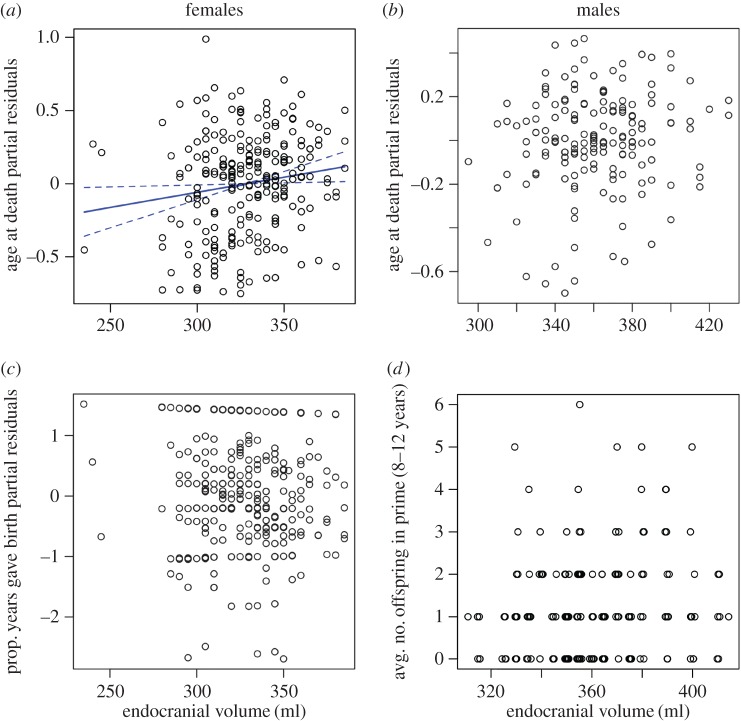Figure 1.
Adult (3+ years) longevity (a,b) and fecundity (c,d) plotted against absolute endocranial volume (solid line = line of best fit, dashed lines = standard errors; see table 3 for model outputs). Panels (a–c) are partial residual plots where the y-axis consists of the residuals (i.e. age ∼ endocranial volume) plus the predictor term (endocranial volume) to show the part of the response variable that is not explained by other explanatory variables (i.e. jaw length). (d) Only the relationship between the response and explanatory variable is shown because random effects impede the ability to construct partial residual plots. Females with larger endocranial volumes lived longer (a; excluding deer that died because they were shot), but did not reproduce at lower rates from the time they first reproduced until they died (c; including deer that died of any cause), whereas there was no correlation between endocranial volume and longevity (b) or fecundity (d) for males.

